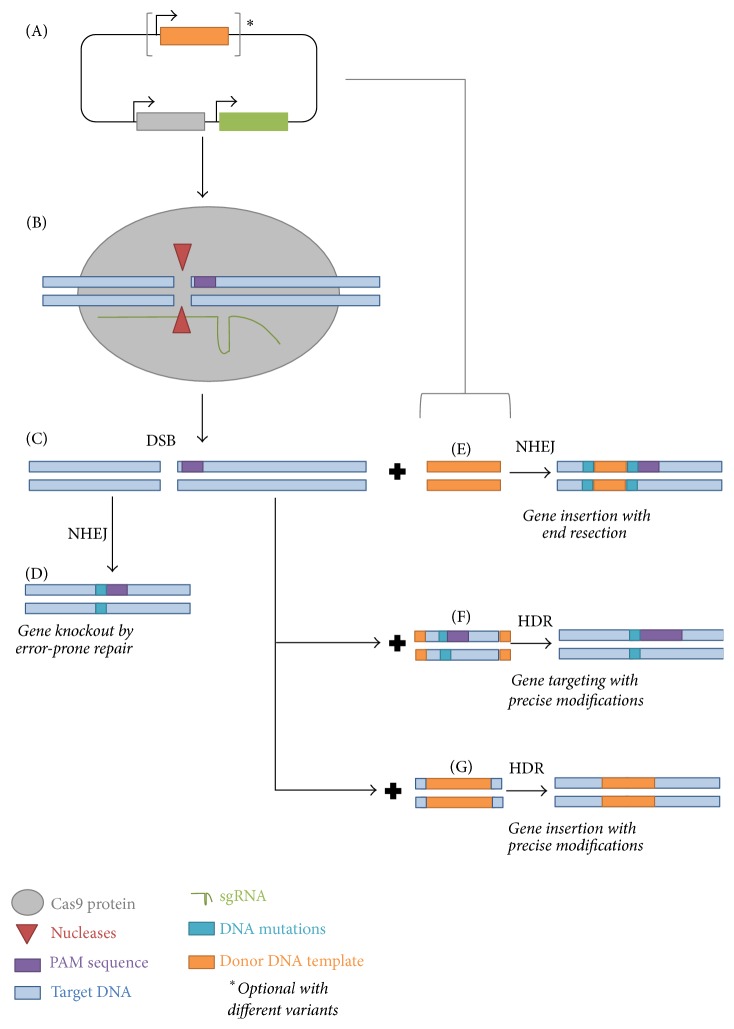Figure 1.
Overview of CRIPR-Cas9 technology for plant genome editing. (A) The most widely used engineered CRISPR-Cas9 system in plants utilizes a plant-codon-optimized Cas9 protein and (could be more than one) single-guide RNA (sgRNA). Optionally, the gene targeting system with geminivirus replicons includes an additional donor DNA template. (B) In plant cells, sgRNA associated with Cas9 nuclease mediates cleavage of target DNA sites that are complementary to the sgRNA and locate next to a PAM sequence. (C) Cas9-induced double-strand DNA breaks (DSBs) can be repaired by nonhomologous end-joining (NHEJ) or homology-directed repair (HDR) pathways. (D) Imprecise NHEJ-mediated repair can generate insertion and/or deletion mutations with variable length at the site of the DSB. These InDels can cause out-of-frame mutations in the coding sequences of the target genes, resulting in gene knockout. (E) In the presence of donor DNA, NHEJ can insert the donor DNA into the site of the DSB together with possibly additional InDel mutations. HR-driven repair can produce precise modifications, including point mutations (F) or insertions from double-/single-strand DNAs as donor templates (G).

